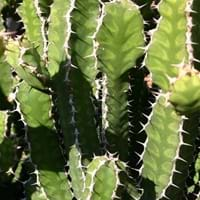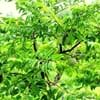Life Span
Perennial
Perennial
Type
Vegetable
Cactus, Shrub
Origin
Mexico, Central America, South America
Southern Africa, South Africa
Types
Not Available
Not Available
Habitat
Coastal Regions
Bushlands, Upland savannas
USDA Hardiness Zone
11-15
10-15
AHS Heat Zone
12-1
Not Available
Sunset Zone
A1, A2, A3, H1, H2, 1a, 1b, 2a, 2b, 3a, 3b, 4, 5, 6, 7, 8, 9, 10, 11, 12, 13, 14, 15, 16, 17, 18, 19, 20, 21, 22, 23, 24
H1, H2, 13, 21, 22, 23, 24
Habit
Upright/Erect
Upright/Erect
Flower Color
Yellow
Light Yellow, Yellow green, Gold
Flower Color Modifier
Bicolor
Not Available
Fruit Color
Red
Not Available
Leaf Color in Spring
Green, Dark Green
Not Available
Leaf Color in Summer
Green, Dark Green
Not Available
Leaf Color in Fall
Green, Dark Green
Not Available
Leaf Color in Winter
Green, Dark Green
Not Available
Leaf Shape
Ovate
Succulent
Plant Season
Spring, Summer, Fall
Spring, Summer, Fall, Winter
Sunlight
Full Sun
Full Sun, Partial Sun, Partial shade
Type of Soil
Loam, Sand
Loam, Sand
The pH of Soil
Neutral
Acidic, Neutral, Alkaline
Soil Drainage
Well drained
Well drained
Bloom Time
Indeterminate
Spring, Late Spring
Tolerances
Drought
Drought
Where to Plant?
Container, Ground
Container, Ground, Pot
How to Plant?
Grafting, Seedlings
Cuttings
Plant Maintenance
Medium
Medium
Watering Requirements
Needs more water during establishment
Needs very little water, occasional watering once established
In Summer
Lots of watering
Lots of watering
In Spring
Moderate
Moderate
In Winter
Average Water
Average Water
Soil pH
Neutral
Acidic, Neutral, Alkaline
Soil Type
Loam, Sand
Loam, Sand
Soil Drainage Capacity
Well drained
Well drained
Sun Exposure
Full Sun
Full Sun, Partial Sun, Partial shade
Pruning
Pinch or prune as they grow to promote branching and bushiness
Remove damaged leaves, Remove dead branches, Remove dead leaves
Fertilizers
14-14-14 Fertilizer, Compost
All-Purpose Liquid Fertilizer
Pests and Diseases
Anthracnose, Aphids, Red blotch, Rust
Mealy bugs, Soft scales
Plant Tolerance
Heat Tolerance, Salt and Soil Compaction
Drought
Flowers
Showy
Insignificant
Flower Petal Number
Single
Single
Fragrant Bark/Stem
Yes
No
Foliage Texture
Medium
Bold
Foliage Sheen
Matte
Not Available
Attracts
Aphids, Not Available, Squirrels
pollinators
Allergy
Stomach pain, Vomiting
Nausea, Skin irritation, Vomiting
Aesthetic Uses
Used in parkland
Ground Cover
Beauty Benefits
Anti-ageing, Blackheads, Reduce Bruises
Not Available
Environmental Uses
Shadow Tree, Soil protection
Air purification
Medicinal Uses
Dehydration, Diabetes, Diarrhea, Nutrients, Weight loss
Asthma, Bronchitis, Diarrhea
Part of Plant Used
Fruits
Sap
Other Uses
Application in Handicrafts, Food for animals, Showy Purposes
Container, useful as a ground cover
Used As Indoor Plant
No
Yes
Used As Outdoor Plant
Yes
Yes
Garden Design
Edible, Herb, Vegetable
Container, Feature Plant, Houseplant, Rock Garden, Wall
Botanical Name
Manilkara zapota
Euphorbia pseudocactus
Common Name
sapodilla , chikoo, Sapota
Tiger Tree
In German
Breiapfelbaum
Tiger Tree
In French
Sapotillier
Tiger Tree
In Spanish
chicle
Tiger Tree
In Greek
sapodilla
Tiger Tree
In Portuguese
sapodilla
Tiger Tree
In Polish
Pigwica właściwa, sapodilla
Tiger Tree
In Latin
sapodilla
tigris lignum
Phylum
Magnoliophyta
Magnoliophyta
Class
Magnoliopsida
Magnoliopsida
Order
Ericales
Malpighiales
Family
Sapotaceae
Euphorbiaceae
Clade
Angiosperms, Asterids, Eudicots
Angiosperms, Eudicots, Rosids
Tribe
Sapoteae
Euphorbieae
Subfamily
Sapotoideae
Euphorbioideae
Importance of Sapodilla and Tiger Tree
Want to have the most appropriate plant for your garden? You might want to know the importance of Sapodilla and Tiger Tree. Basically, these two plants vary in many aspects. Compare Sapodilla and Tiger Tree as they differ in many characteristics such as their life, care, benefits, facts, etc. Every gardener must at least have the slightest clue about the plants he wants to plant in his garden. Compare their benefits, which differ in many ways like facts and uses. The medicinal use of Sapodilla is Dehydration, Diabetes, Diarrhea, Nutrients and Weight loss whereas of Tiger Tree is Asthma, Bronchitis and Diarrhea. Sapodilla has beauty benefits as follows: Anti-ageing, Blackheads and Reduce Bruises while Tiger Tree has beauty benefits as follows: Anti-ageing, Blackheads and Reduce Bruises.
Compare Facts of Sapodilla vs Tiger Tree
How to choose the best garden plant for your garden depending upon its facts? Here garden plant comparison will help you to solve this query. Compare the facts of Sapodilla vs Tiger Tree and know which one to choose. As garden plants have benefits and other uses, allergy is also a major drawback of plants for some people. Allergic reactions of Sapodilla are Stomach pain and Vomiting whereas of Tiger Tree have Nausea, Skin irritation and Vomiting respectively. Having a fruit bearing plant in your garden can be a plus point of your garden. Sapodilla has showy fruits and Tiger Tree has no showy fruits. Also Sapodilla is not flowering and Tiger Tree is not flowering . You can compare Sapodilla and Tiger Tree facts and facts of other plants too.





